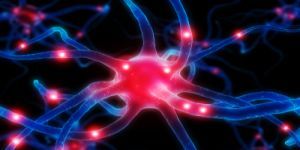Combining Copaxone Treatment with Female Hormone Reduces Multiple Sclerosis Relapse Rate
Among multiple sclerosis (MS) patients, a combination of estriol and Copaxone (glatiramer acetate) reduced the rate of relapse by 50% percent within one year of treatment.

Among multiple sclerosis (MS) patients, a combination of estriol and Copaxone (glatiramer acetate) reduced the rate of relapse by 50% percent within one year of treatment, according to data presented at the 66th American Academy of Neurology Annual Meeting, held April 26, 2014, to May 3, 2014, in Philadelphia.
In a preliminary phase 2 clinical trial, neurologist Rhonda Voskuhl, MD, Director of the MS Program at UCLA, observed 158 women with relapsing-remitting MS for 12 months. One participant group was treated with a combination of Copaxone, an MS medication, and 8 mg of estriol, a female hormone, while the other groups received a combination of Copaxone and placebo.
After 12 months, Voskuhl found the women who were prescribed estriol and Copaxone experienced 47% fewer relapses than those on the Copaxone and placebo treatment regimen. Additionally, patients who were prescribed Copaxone and estriol scored higher on cognitive tests than those taking Copaxone and placebo.
After 2 years of treatment, the MS patients taking only Copaxone saw an improvement in their symptoms; however, the effects were not as strong as in patients who received Copaxone with estriol.
The results further supported Voskuhl’s earlier research that found estriol repaired brain cells in mice models with MS. According to Voskuhl, the hormone was responsible for an increase in connections between neurons, which resulted in improved cell transmission.
"Currently, all of the available drugs reduce immune attacks on the brain, but none of them protects the brain,” Voskuhl noted in a statement. “Estriol is particularly promising because it both reduces attacks and protects the brain directly. It's a 2-pronged approach: an anti-inflammatory prong to reduce the attacks, and a neuroprotective prong to make the brain suffer less damage in case of an attack."
Although the combination therapy offers potential for MS patients, Voskuhl said further study would allow the effects of estriol to be observed in a larger pool of patients.